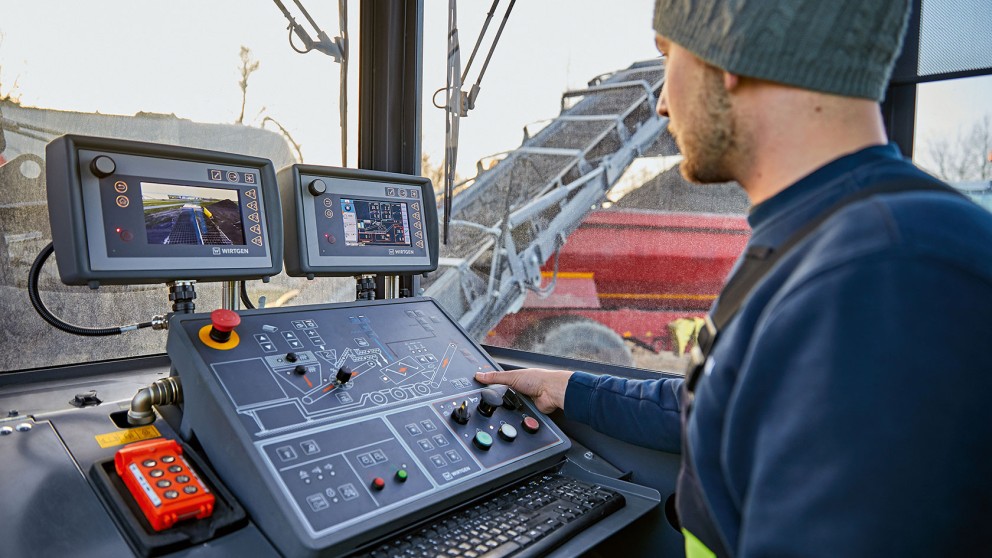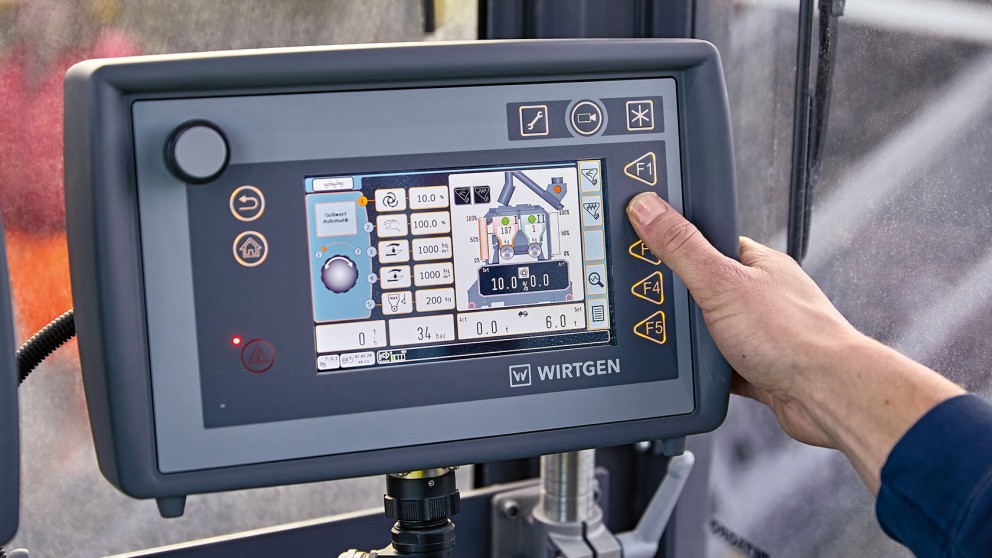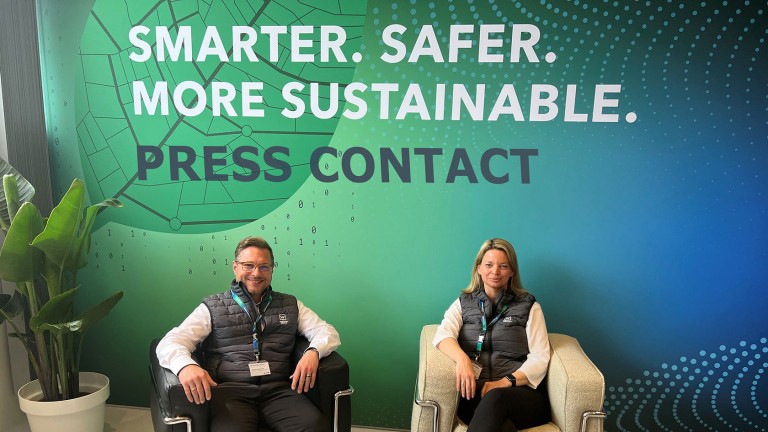20 Tons of Cold Recycled Mix Every Five Minutes
Processed sustainably and close to the job site with the Wirtgen KMA 240(i) cold recycling mixing plant
The new KMA 240(i) is the high-performance Wirtgen solution for environmentally friendly and cost-effective mix preparation in the immediate vicinity of the job site.
Environmentally Friendly, Cost-Effective, Versatile
In the case of cold in-plant recycling, a mobile cold recycling mixing plant is set up near the job site. This saves time, truck capacity, and is also extremely environmentally friendly, making it possible to achieve up to 60% fewer CO₂ emissions through cold processing, a 50% reduction in construction times, and 50% lower construction costs.
The KMA 240(i) cold recycling mixing plant produces mix that can be paved immediately and is suitable for the production of various types of bound base layers. In addition to cement-treated base layers (CTB) and roller-compacted concrete (RCC), the machine can also be used to produce bituminous bound base layers (with emulsion or foamed bitumen). The different mixes can be used for a wide range of applications, from highway construction to road and path construction to the construction of parking lots.
The new roads and industrial areas built in this way stand out for their high bearing capacity, resistance to deformation, and long service life. As a result, Wirtgen’s cold recycling technology not only maximizes sustainability, but also offers tremendous savings potential in addition to conserving natural resources:
Faster Mix Preparation Thanks to Optimized Metering
Silos or tank trucks supply the cold recycling mixing plant with binding agents, such as hot bitumen, bitumen emulsion, and cement. The precise metering of the input materials and binding agents, the ratio of which is determined in advance by preliminary tests at the road construction laboratory, is monitored by a proven microprocessor control system. Ideally, the KMA 240(i) then loads the new, homogeneous construction material mixture directly onto trucks or continuously deposits it onto a stockpile.

The main control panel of the KMA 240(i) provides the operator with an overview of the material flow, the machine’s status, and the entire production process at all times.
Case Study: New CTB at Paderborn Airport
With its 6-cylinder diesel engine, the new KMA 240(i) mobile cold recycling mixing plant can produce 240 tons of mix per hour from various construction materials. During rehabilitation of the apron as well as the refueling and deicing area at Paderborn-Lippstadt Airport, the requirements included the increased compressive strength of the new cement-treated base layer (CTB) in addition to a high mixing capacity.
In this project – one of its first real-world tests – the KMA 240(i) processed 5,500 tons of construction materials in only seven days, producing ready-to-pave mix in the process. Prior to this, the contractor, Oevermann, had already milled off the 15,000 m² tarred surface of the job site with a Wirtgen W 220(i) cold milling machine and stockpiled the removed material in an adjacent parking lot together with crushed limestone 0/5 that was being used as an additive. Both construction materials were fed by wheel loader into the hopper of the KMA at a ratio of 80% milled material to 20% limestone, where they were processed in the twin-shaft pugmill together with cement as the binding agent and water to produce a high-quality mix.

Efficient technology: the Wirtgen cold recycling mixing plant operates with maximum precision thanks to a microprocessor-controlled plant control system.
Twice the Compressive Strength Achieved
Usually, the uniaxial compressive strength of such mixes is 5 – 7 MPa. In this case, however, the CTB was required to meet increased demands and achieve a compressive strength of 12.5 – 15 MPa. For this reason, the operator of the KMA 240(i) decided to increase the amount of cement added to the construction material mix of milled granulate and limestone to 10% as opposed to the usual 5 – 6%. Thanks to the approximately 800 tons of cement mix produced each day, the downstream paving equipment was also in continuous operation. After a grader had evenly distributed the material across the individual sections, two Hamm 3412 compactors were used to achieve optimal compaction of the new CTB.

Public Relations
Reinhard-Wirtgen-Straße 2
53578 Windhagen
Germany
